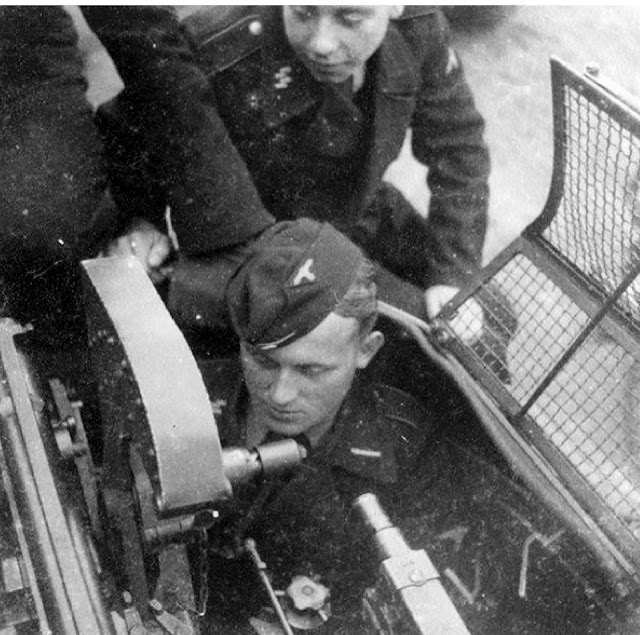Walter Kretz, a radioman and loader in the Sturmgeschütz-Abteilung 244 (244th Assault Gun Battalion), describes his experience in the Battle of Stalingrad : “I was made a relay radioman in a radio vehicle. These were lightly armored vehicles with radio equipment, wheels at the front, and tracks in the rear. When the assault guns were in action, they were used to bring up supplies of ammunition. Our battalion commander was Major Dr. Paul Gloger, who was well beloved by the troops. He was generally known as ‘Papa Gloger.’ In our operations, we saw Stalingrad by the Volga for the first time. We fought in northern, central, and southern Stalingrad. The entire city stretched for about forty kilometers along the Volga. Most private homes had been made of wood; many had been burned down already so that only the chimney was left standing. Because of the constant shelling from both sides, there were fires burning constantly in the entire city. High in the city, our battalion strongpoint was located in a small white house. All around us, homes had been destroyed or burned down. When we stayed there over -night, we felt secure, but later we moved to earth bunkers during the night as the shelling from the other bank of the Volga increased. Once, a comrade and I had to bring a report to our assault guns, probably because the radio had malfunctioned. We had to stay in cover as much as possible since the enemy could see us. Down at the railway tracks, we came under fire. We passed on our report and, taking another route, returned to our battalion strongpoint, during which we took cover behind the chimneys. In the autumn of 1942, the Sturmgeschütz-Abteilung 244 received twelve 15cm heavy infantry guns on Panzer III carriages for special purposes. They were to be used right in front. In Stalingrad, there was a crossing that was always shelled when Wehrmacht vehicles drove down the street, even though the enemy could not observe it. For horse-drawn wagons, it always was difficult since they drove too slowly. It was concluded that Soviet observers with radios could see the crossroads from the factory chimneys. So now the gun commanders of the 244th were given the order to topple the chimneys. The gun commander brought down four or five chimneys. A Soviet artillery observer plunged down from one chimney. A Croat major of the Croatian Infanterie-Regiment 369, who had seen the kill, handed the gun commander a Croatian decoration.”
Source :
Book "Winter Storm: The Battle for Stalingrad and the Operation to Rescue 6th Army" by Hans Wijers










